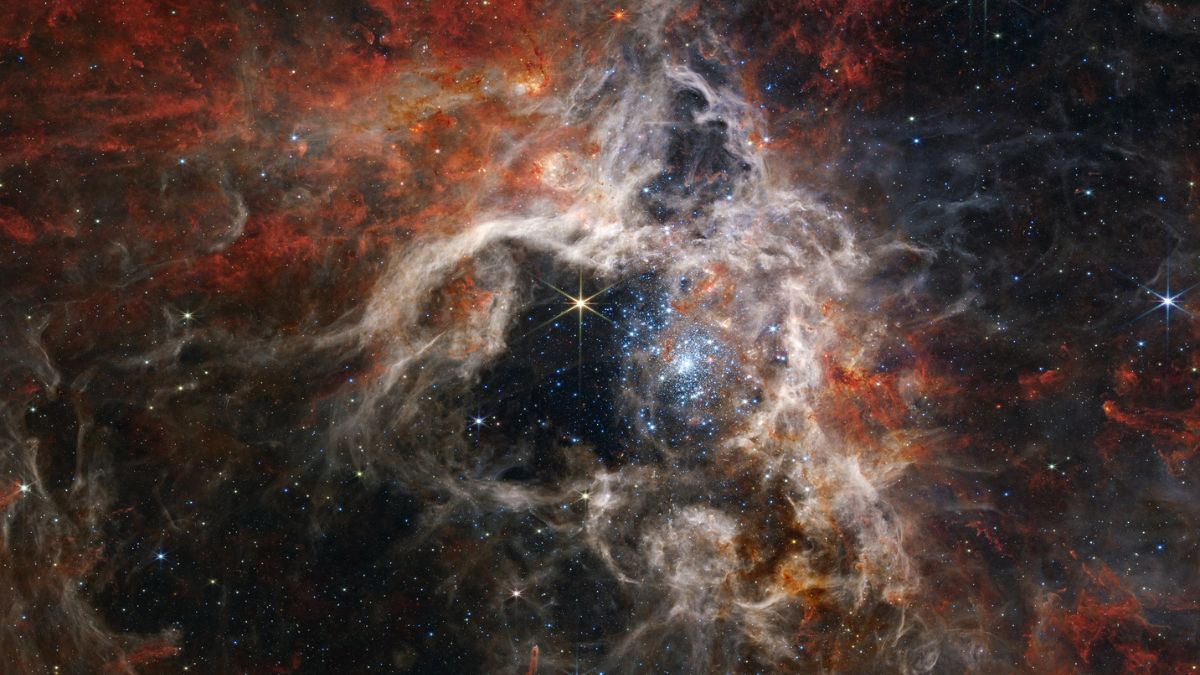Science
We Won’t Live to 100: New Data Reveals a Hard Limit of Human Life
15 November 2025

Scientists have detected the chemical seeds of life in a distant galaxy. The James Webb Space Telescope (JWST) revealed complex compounds in cosmic ice that could lead to the formation of amino acids and elements of DNA. While not life itself, this marks one of the most exciting signals yet in our search for an answer to the question: does alien life exist? Crucially, this all occurred in a location previously considered highly unfriendly to such processes.
A team led by Marta Sewiło from the University of Maryland utilized the James Webb Space Telescope to examine a young star outside the Milky Way galaxy. The object is surrounded by fragments of cosmic ice, and within them lie the chemical precursors to primitive, extraterrestrial life. The observation results have been published in The Astrophysical Journal Letters.
The cutting-edge research instruments aboard the Webb telescope allowed scientists to analyze the spectrum of light reflected by the star’s icy envelope with high precision. They identified five complex chemical compounds within it. Notably, one of them—acetic acid (vinegar)—had never before been observed in cosmic ice.
What does this have to do with life beyond Earth? The identified substances (including ethanol and methyl formate, in addition to acetic acid) are basic components of other chemical compounds essential for life to emerge. They are the ingredients for amino acids (the building blocks of proteins), sugars, and nucleobases (involved in DNA creation). However, the location where they were found is even more fascinating than the substances themselves.
The Large Magellanic Cloud (LMC) is a satellite galaxy located approximately 163,000 light-years from Earth. It orbits the Milky Way but differs significantly from our galaxy. For instance, its chemical composition may contain up to half the amount of elements heavier than helium. It also holds much less dust than our galaxy and is constantly bombarded by intense radiation from newly forming stars.
The formation of even such primitive chemical precursors to life under these harsh conditions is a major revelation for astronomers.
“The discovery shows that the reactions producing them can occur in an environment much harsher than the Sun’s neighborhood,” says Will Rocha from Leiden University (Netherlands), a co-author of the study.
The discovery does not prove the existence of life beyond Earth, but it suggests something equally compelling: the necessary ingredients for organisms could have formed much earlier in the universe’s history and under much more diverse conditions than we previously thought. Conditions prevalent in the Large Magellanic Cloud resemble those that existed during the cosmos’s early years. This strengthens the possibility that does alien life exist isn’t just a fantasy.
Marta Sewiło plans to expand observations to more young stars in the Magellanic Clouds. Currently, complex molecules forming the fundamental precursors to life have been detected in only four other locations within the Milky Way.
While we are not dealing with alien life yet, only its chemical precursors, the discovery opens the door to further research on the topic. Perhaps further observations will bring sensational reports about life forms in the Magellanic Clouds, providing the ultimate answer to: does alien life exist?
Read this article in Polish: Przełomowe odkrycie: poza Drogą Mleczną wykryto chemiczne zalążki życia

Science
15 November 2025


Zmień tryb na ciemny